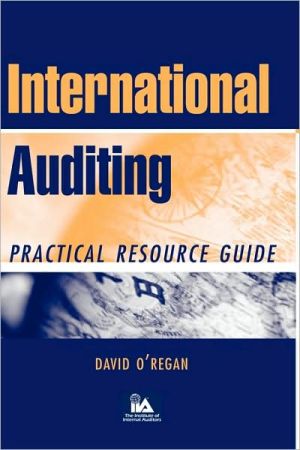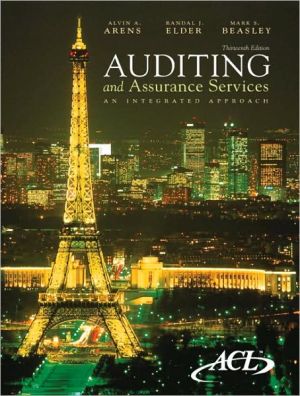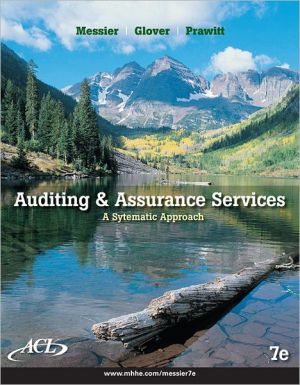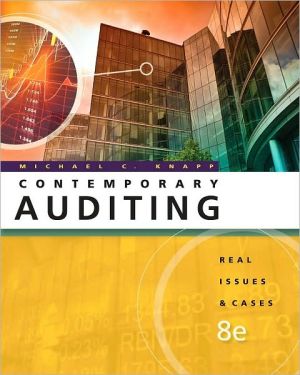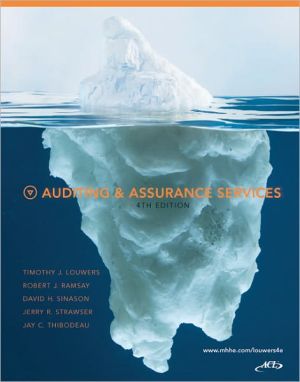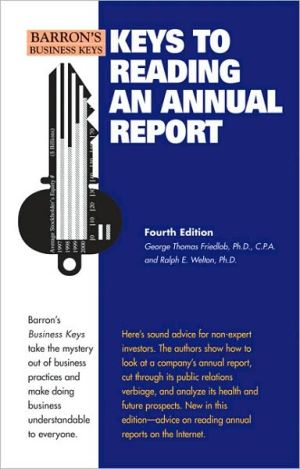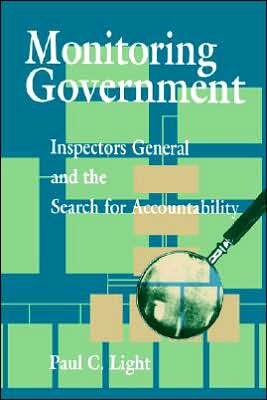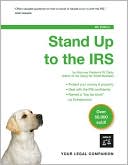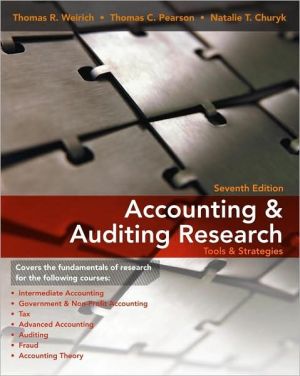International Auditing
An essential resource for the international auditor\ When conducting audits abroad, even the most straightforward exercises can turn into logistical nightmares when auditors are confronted with unfamiliar risks, logistical difficulties, and foreign languages. While the global marketplace is always unpredictable, there is no excuse for ever being surprised. International Auditing presents a comprehensive primer on regulatory standards around the world as well as the cultural, linguistic, and...
Search in google:
Stay abreast of the latest information on international auditing with this indispensable resource. Obtain practical guidance in such areas as risk assessment, logistics, and cultural/business environment in an international context. Examine the risks international companies face as a cost of doing business and learn proven methods of addressing these risks. This guide gives you advice on how to plan safe and efficient auditing assignments and provides information on regions and countries throughout the world to allow you to place your assignment in a wide context. Order your copy today!
\ International Auditing: Practical Resource Guide\ \ \ \ By David O'Regan\ \ \ John Wiley & Sons\ \ \ \ Copyright © 2003\ \ David O'Regan\ All right reserved.\ \ \ ISBN: 0-471-26382-6\ \ \ \ Chapter One\ \ \ Introduction-\ International Auditing\ \ EXTERNAL AND INTERNAL AUDITING\ Auditing Theory and History\ It is appropriate to begin a review of international auditing by defining its terminology\ and setting out a brief historical background. Auditing is an evaluative\ process in which the auditor acts as an intermediary between two (or more) parties.\ The auditor has historically gathered, examined, and evaluated evidence\ against predetermined criteria, and reported the results to interested parties.\ The context in which auditing emerged has often been presented in terms of\ "agency theory." This proposes that information asymmetry arises when owners\ of economic resources (principals) delegate the control of those resources to managers\ (agents). If principals are unable to adequately monitor that agents are fully\ representing their interests, they may seek the help of outside parties (auditors) to\ offer independent advice on agents' behavior.\ The history of auditing is ancient. It appears that ever since individuals and\ institutions started to record economic activities, they have felt a need toemploy\ auditors to monitor and oversee them. The classical empires of Rome and China,\ for example, created elaborate civil services to monitor and report on state\ finances and to assess taxation revenues. Some commentators even claim that\ auditing practices date from the very dawn of literate civilization:\ "According to earliest Mesopotamian records dating back to 3600 B.C., scribes\ used to prepare summaries of financial transactions. These were separate from the\ lists of amounts handled and which others had prepared.... Tiny marks, dots, and\ circles indicated the painstaking comparison of one record with another-marks\ that have survived the centuries and that auditors still use to tick off their verification\ of records. Thus were born two control devices still used around the world:\ division of duties; provision for the review of another's work."\ In England in the Middle Ages, many of the parties interested in manorial audits\ were illiterate and the audit was usually presented orally. As a result, the\ modern English word audit came into use, derived from the Latin verb audire\ ("to hear"). In modern times, auditing tends to be rigorously documented, but the\ discipline's name still hints back to the era of "audit by ear."\ This brief historical sketch suggests that evaluative practices recognizable as\ forms of auditing have existed since antiquity. Out of the rudimentary practices of\ the past, modern auditing has emerged as a multifaceted, complex, and constantly\ developing discipline. The auditing profession today tends to be categorized in\ two main branches, external and internal auditing, which are discussed in the following\ sections.\ \ External Auditing\ External auditing focuses on the evaluation of financial statements, and it first\ emerged as a professional discipline in the United Kingdom in the nineteenth century.\ As we have seen, agency theory argues that the auditor acts as an intermediary\ between two (or more) parties in situations where the custody, administration,\ or use of economic resources has been delegated. Such a situation arose in Britain\ in the nineteenth century, when the creation of limited liability corporations resulted\ in separation of the providers of industrial capital from the managers who\ administered it. To monitor that investments were appropriately managed and\ controlled, the external auditing profession offered providers of capital an independent\ and objective opinion on the primary record of corporate accountability-published\ financial statements.\ Two early influences on the development of early British external auditing\ were legislation and the accountancy profession. British legislation on financial\ auditing was initially patchy, but it progressively increased requirements for the\ audit of the financial statements of larger corporations and "public interest" organizations,\ such as the railways. Meanwhile, external auditing's focus on financial\ statements inevitably led to strong links with accountants. The first institutions of\ modern public accountancy (from whose ranks external auditors were drawn) first\ appeared in Scotland in 1854 and England in 1870 before spreading throughout\ the world. With the establishment of the American Institute of Certified Public\ Accountants in 1887, external auditing's professional center of gravity shifted to\ the United States, where it has since remained. Most twentieth-century developments\ in accounting have originated from the United States, which adapted rather\ than adopted earlier British models.\ In the twentieth century, professional accountancy and auditing associations\ around the world gradually introduced certification programs for their members.\ They also developed auditing standards to codify and define the discipline's\ methodologies, technical base, and ethical foundations. The latter have tended to\ focus on auditor independence, without which the objectivity of the auditor's\ opinion is debased.\ In addition to the role of professional accountancy bodies, another striking\ aspect of the external auditing profession has been the rise of powerful auditing\ firms. The history of early British auditing firms may seem far removed from\ today's auditing environment, but it is worthwhile to note their astonishing\ longevity. The auditing firms of nineteenth-century London were the forerunners\ of most of today's international, multidisciplinary auditing and accounting organizations.\ Among the names of London auditing firms in 1886 were several that\ have survived, in various combinations, to the modern era-Cooper Brothers;\ Deloitte, Dever, Griffiths; and Price, Waterhouse.\ Modern external auditing is therefore the result of almost two centuries of continuous\ evolution. Legislation in most industrialized nations requires the annual\ external audit of all but the smallest corporations, and restricts auditing to the certified\ members of professional accountancy and external auditing associations.\ The practice and theory of external auditing are constantly refined, often as a\ result of public disquiet over corporate failures or as a result of periodic corporate\ governance initiatives. Nonetheless, the core of external auditing has changed\ very little over the years, and has remained the "independent examination of, and\ expression of opinion on, the financial statements of an enterprise by a qualified\ auditor."\ External auditors seek to provide objective, independent opinions on the accuracy\ and fair presentation of financial statements. Their reports are not of interest\ solely to direct investors, but also to many other potentially interested parties and\ stakeholders-tax authorities, banks, creditors, employees, potential investors,\ and the wider community.\ In the United States, the external auditor confirms that an audit of an organization\ has been conducted in accordance with generally accepted auditing standards,\ and gives an opinion on the extent to which financial statements "present fairly, in\ all material respects" the organization's financial position at the balance sheet date\ and the results of operations and cash flows for the period under review. The auditor's\ opinion must also cover the extent to which the financial statements have\ been prepared in accordance with generally accepted accounting principles. Only\ if there is no material doubt in these areas does the auditor give an unqualified\ opinion. In Britain, the terminology differs slightly: The British auditor gives an\ opinion on the extent to which audited financial statements provide a "true and\ fair" view and have been prepared in accordance with appropriate accounting\ standards and legislation.\ The English-speaking world generally follows U.S. and British traditions of\ financial auditing. In recent years, other countries have tended to move closer to\ the English-speaking world's external auditing culture. For example, in countries\ such as France and Germany where adherence to fiscal legislation has traditionally\ driven accounting and external auditing, the notion of "true and fair" has entered\ legislation through the harmonization directives of the European Union (EU).\ \ Internal Auditing\ As its name implies, internal auditing is self-consciously distinct from external auditing,\ although there can be areas of overlap between the two disciplines. An important\ feature differentiates the two categories of auditing-the internal auditor's\ remit is normally far wider than that of the external auditor. External auditing concentrates\ on financial auditing, while internal auditing covers financial auditing,\ operational efficiency reviews, fraud investigations, compliance testing, environmental\ audit, and more.\ Another important difference between the internal and external auditor is that\ the former has traditionally been an employee of the audited organization and reports\ to its management, while the latter tends to be fully independent, to maintain\ the objectivity of the external audit opinion. (In recent years, this internal versus\ external distinction has blurred, as external auditors have increasingly provided internal\ auditing services to their clients.)\ It is notoriously difficult to define internal auditing, owing to the wide range of\ activities that fall within its remit. Searching for a definition that collapses so\ many types of activity may seem daunting. As one commentator has remarked:\ "In addition to financial audits, there are now environmental audits, value for\ money audits, management audits, forensic audits, data audits, intellectual property\ audits, medical audits, teaching audits, technology audits, stress audits,\ democracy audits, and many others besides.... What are we to make of this explosion\ of 'audits'?"\ Despite such difficulties, the Institute of Internal Auditors (IIA) has provided a\ satisfactory definition of internal auditing. The IIA has formulated a Professional\ Practices Framework for internal auditing that comprises standards, a code of\ ethics, educational products, and research literature. However, although the IIA\ has a respected certification program, it does not have exclusivity or monopolistic\ control in the field of internal auditing. Consequently, many thousands of internal\ auditors operate outside the IIA's framework. (This situation contrasts\ starkly with the status of external auditors, whose professional associations normally\ have exclusive certification within national boundaries.) The IIA's position\ is therefore somewhat curious, in that its standards and advice are followed by\ many internal auditors, yet are compulsory only for its members.\ Nonetheless, the IIA is a prestigious and highly respected institution with over\ 75,000 members throughout the world. Since its foundation in 1941, the IIA has\ been a tenacious promoter of internal auditing as a professional discipline, and has\ developed an authoritative literature on the subject. Its pronouncements deserve\ recognition as best practice by internal auditors, whether or not they are formal\ IIA members. The IIA's body of knowledge has grown to maturity like the topsoil\ of a forest, by slow accumulation over decades, and it would be unwise to neglect\ preexisting internal auditing theory of this nature.\ The IIA currently defines internal auditing as "an independent, objective\ assurance and consulting activity designed to add value and improve an organization's\ operations. It helps an organization accomplish its objectives by bringing a\ systematic, disciplined approach to evaluate and improve the effectiveness of risk\ management, control, and governance processes." The IIA also states that internal\ auditing "reviews the reliability and integrity of information, compliance with\ policies and regulations, the safeguarding of assets, the economical and efficient\ use of resources, and established operational goals and objectives. Internal audits\ encompass financial activities and operations including systems, production,\ engineering, marketing, and human resources."\ This carefully constructed definition is wide, and several of its terms are worth\ noting. First, the reference to "independent" is not to be understood in terms similar\ to that of the external auditor, who is generally required to sever all formal\ links with an audited organization. Internal auditors tend to be employees (and\ sometimes also stockholders) of their organizations. Therefore, "independence" in\ the context of internal auditing does not refer to the formalities of financial independence,\ but to a state of mind characterized by objectivity and rigor.\ Second, the reference to "assurance and consulting" indicates internal auditing's\ oscillation of emphasis between compliance and consultancy. While it is impossible\ to hold the jar of internal auditing to the light and expect compliance and consultancy\ to separate like oil and water, it is nonetheless clear that a suitable balance\ between these two characteristics is at the heart of all internal auditing activity. The\ precise weighting of the two strands of internal auditing is often a matter of taste,\ and of meeting the needs of an organization's particular circumstances.\ Historically, internal auditors may have suffered from an image as the poor\ relation of the external auditor, but this has changed in recent years as corporate\ governance developments around the world have increasingly endorsed the importance\ of internal auditing. For example, the United Kingdom's 1999 Turnbull\ Report places explicit emphasis on the value of internal auditing alongside other\ corporate risk-monitoring mechanisms. The Turnbull Report requires corporations\ listed on the London Stock Exchange to assess annually the need for an internal\ audit function and, where there is an internal audit function, to annually\ review its scope of work, authority and resources.\ Aside from formal corporate governance requirements, the delays between\ periodic external audits are often deemed too long to respond to the complex, fast-moving\ management needs of modern organizations. Internal auditing meets this\ challenge by providing continuous compliance and advisory services to an organization's\ management.\ \ Cooperation between External and Internal Auditors\ A certain degree of overlap between the assurance services of external and internal\ auditors is probably inevitable. External reviews of the accuracy and fair presentation\ of periodic financial statements naturally complement continuous internal reviews\ of risks, controls, and management accounting. An important factor taken\ into consideration by the external auditor in reaching an opinion on financial statements\ is the reliability of accounting procedures and controls.\ \ Continues...\ \ \ \ \ \ \ Excerpted from International Auditing: Practical Resource Guide\ by David O'Regan\ Copyright © 2003 by David O'Regan.\ Excerpted by permission.\ All rights reserved. No part of this excerpt may be reproduced or reprinted without permission in writing from the publisher.\ Excerpts are provided by Dial-A-Book Inc. solely for the personal use of visitors to this web site.\ \ \
PrefaceAbbreviations1Introduction - International Auditing12International Organizations and Their Risks113Managing International Risks274Organization-Wide Risk Assessment395The Logistics of Auditing456Concluding Thoughts517Select Bibliography and Other Sources of Information55Global Reference Section59Africa61The Americas93Asia and Pacific Region129Europe191The Mideast263Index289
